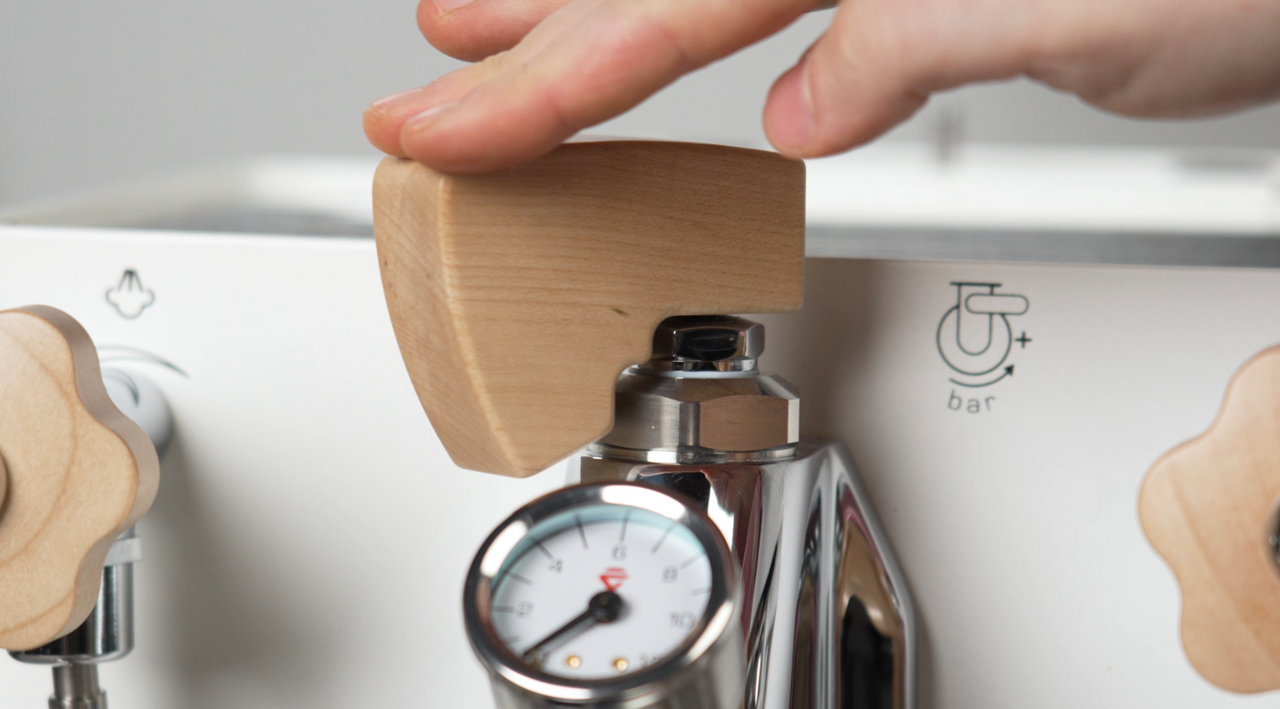Brewing the perfect espresso shot is a challenge for even the most seasoned coffee veterans. Getting every piece of the puzzle just right takes a lot of practice and effort, from the grind size, to the tamp, to the water temperature, and the flow. One of the best ways to save a shot gone awry is with flow control. But what is flow control?
What is Flow Control?
Some espresso machines offer direct control over the flow rate of water through the puck of espresso as you pull the shot. Most machines like this provide this control with a paddle or lever that you can open and close to adjust flow.
This kind of control allows you to recreate the profiles of a wide range of different types of machines. You can also use it to correct for issues in the espresso prep process.
Correction Methods
First up, you can adjust the pre-infusion length with a flow control valve. By opening the the flow valve halfway and engaging the pump you can allow the water to fully saturate the puck before pulling the rest of your shot. Once you've saturated the puck you can open the valve fully to let water flow and complete the brewing process. This can help correct under-extraction, which can help you when trying to dial in tricky lighter roasts that have a tendency to come out more sour.
Another way that you can truly "save" a shot is to partially close the valve when you notice that your shot is extracting too fast. You have to be quick to pull this off, but in the event that your grind size is off and water begins to flow too fast, tightening up the valve can help promote full extraction as it'll result in more contact time between the water and the coffee.
Strength Vs. Extraction and Why Flow Control Works
A common misconception is that the strength of a brew is directly related to proper extraction. This is not the case, as strength is almost always tied to brew ratios rather than extraction. Extraction is a product of proper water temperature and proper bonding of water to coffee solids. You can generally account for lower temperatures by increasing brew time, such as with cold brew, but that is a more extreme example than what you can accomplish with an espresso machine.
Under-extraction with espresso is typically the result of a grind that is too coarse, which will fail to provide enough back pressure for the water to properly saturate the puck of espresso and bond with the coffee solids. By using flow control in the method outlined above, we can reduce the water pressure and slow down that extraction process.
Should I Invest in a Machine With Flow Control?
Flow control is a relatively high end feature that tends to be offered on fairly expensive machines. While we do think it's a feature worth investing in for serious enthusiasts, it's not necessarily something you should prioritize on your first machine. That said, if you do decide you're ready for a machine of that caliber we highly recommend both the Lelit Bianca and the Diletta Alto.
If you're interested in seeing these techniques in action and learning more about flow control you can check out our video below! And be sure to share your experiences with this powerful feature in the comments.


